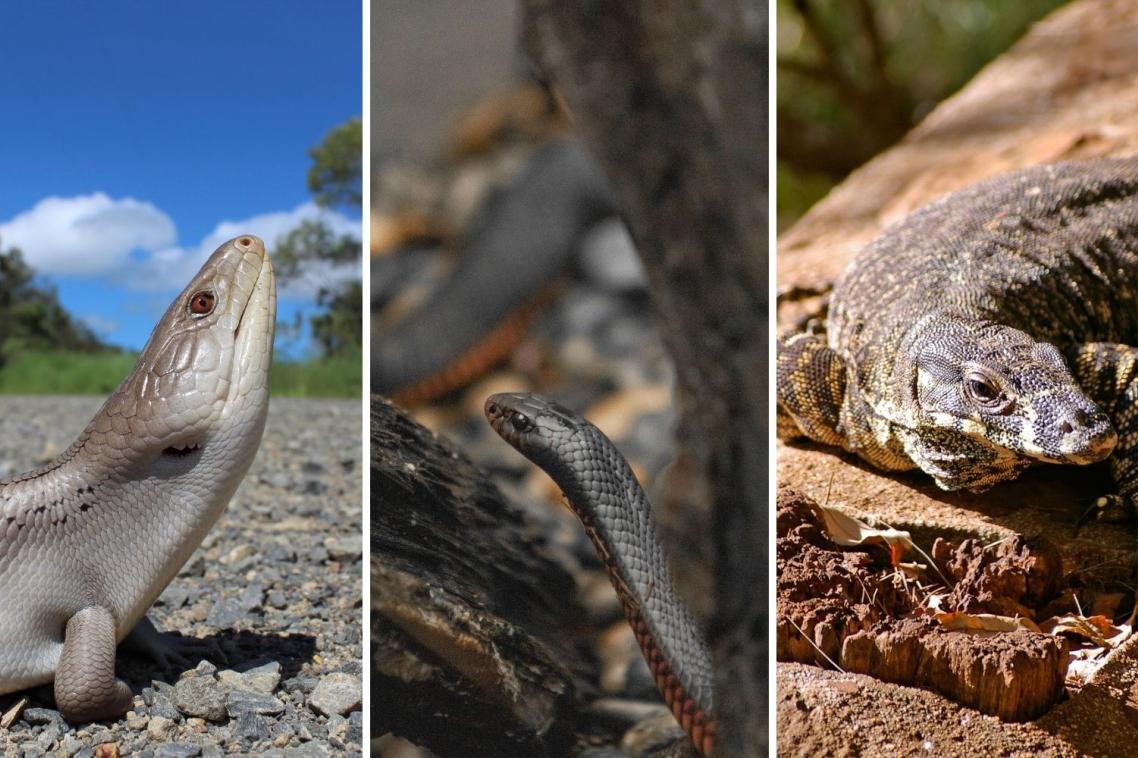Blue-tongue vs red-bellied black: An Australian evolutionary arms race

Scientists have discovered that the humble blue-tongue lizard is largely resistant to the venom of the deadly red-bellied black snake, while giant carnivorous monitor lizards which feed on Australia’s most venomous snakes are not.
The surprising finding was revealed after University of Queensland scientists compared the effects of various reptile blood plasmas when exposed to the venom.
UQ PhD candidate Nicholas Youngman said mammalian – and particularly, human – reactions had been heavily investigated, but very little was known about snake venom effects on other reptiles.
“It was a shock discovering that the eastern blue-tongue, along with the shingleback, showed resistance specifically to red black snake venom,” Mr Youngman said.
“Since their resistance was so specific to only this snake species, it seems these lizards have evolved a special plasma component – known as a serum factor – in their blood.
“This prevents specific toxins in red-bellied black snake venom from clotting the lizards’ plasma, which would lead to a rapid death in most other animals.
“This resistance doesn’t mean they’re completely immune, but it would give them a greater chance of survival, allowing them to escape or fight back.
“Much like how a COVID-19 vaccine doesn’t mean you don’t get sick at all, it just means you are less likely to die.”
The research team analysed the effects of seven different Australian snake venoms on the plasma of two species of blue-tongued skinks and three species of monitor lizards that would interact with these snakes in the wild.
Associate Professor Bryan Fry, who heads UQ’s Venom Evolution Lab, said the results also revealed that monitor lizards – or goannas – were not resistant to the snake venoms.
“You’d think that a goanna would be significantly resistant to the venom of any snake it was hunting and eating, but that isn’t the case,” Dr Fry said.
“Snake venom can only cause harm to goannas if it’s injected into its body by the snake’s fangs, it can’t be absorbed directly through the skin.
“Goannas are heavily armoured and their scales act like medieval chain mail, with each containing a piece of bone, meaning venomous snakes’ fangs struggle to pierce this armour.
“So – unlike the slow, vulnerable blue-tongue lizard – there’s no pressure for goannas to evolve resistance; natural selection has invested in their armour and it’s clearly working for them.
“These two divergent forms of resistance are fascinating examples of evolutionary novelty.”
The research has been published inToxins.
Related articles

Under the surface: how genetics could save the Great Barrier Reef

Peptides to prime plant defence against viruses in vegetables
Media contact
UQ Communications
communications@uq.edu.au
+61 429 056 139
